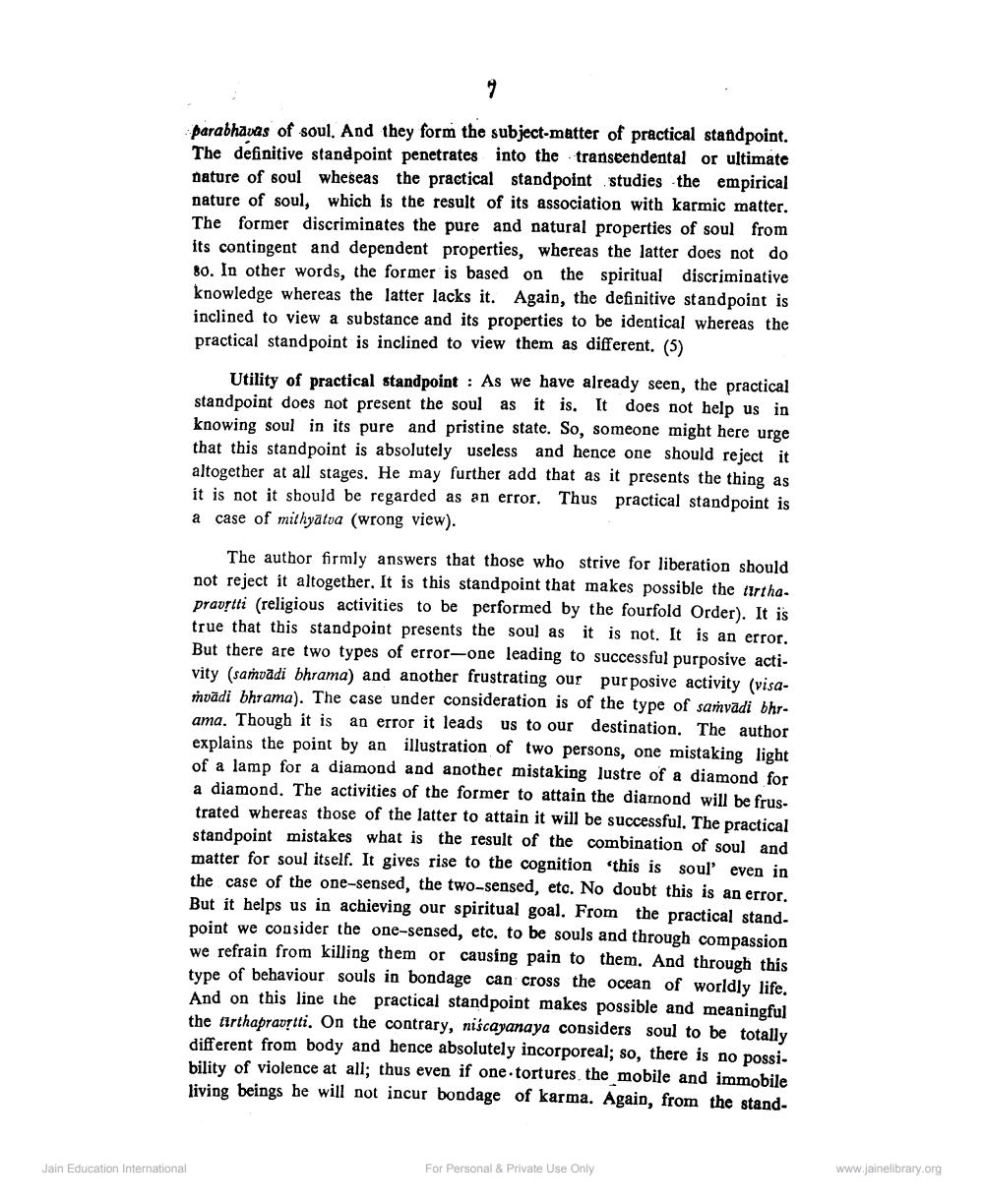________________
Jain Education International
7
parabhavas of soul. And they form the subject-matter of practical standpoint. The definitive standpoint penetrates into the transcendental or ultimate nature of soul wheseas the practical standpoint studies the empirical nature of soul, which is the result of its association with karmic matter. The former discriminates the pure and natural properties of soul from its contingent and dependent properties, whereas the latter does not do 80. In other words, the former is based on the spiritual discriminative knowledge whereas the latter lacks it. Again, the definitive standpoint is inclined to view a substance and its properties to be identical whereas the practical standpoint is inclined to view them as different. (5)
Utility of practical standpoint: As we have already seen, the practical standpoint does not present the soul as it is. It does not help us in knowing soul in its pure and pristine state. So, someone might here urge that this standpoint is absolutely useless and hence one should reject it altogether at all stages. He may further add that as it presents the thing as it is not it should be regarded as an error. Thus practical standpoint is a case of willyatoa (wrong view).
The author firmly answers that those who strive for liberation should not reject it altogether. It is this standpoint that makes possible the tirthapravṛtti (religious activities to be performed by the fourfold Order). It is true that this standpoint presents the soul as it is not. It is an error. But there are two types of error-one leading to successful purposive activity (samvadi bhrama) and another frustrating our purposive activity (visamvadi bhrama). The case under consideration is of the type of samvadi bhrama. Though it is an error it leads us to our destination. The author explains the point by an illustration of two persons, one mistaking light of a lamp for a diamond and another mistaking lustre of a diamond for a diamond. The activities of the former to attain the diamond will be frustrated whereas those of the latter to attain it will be successful. The practical standpoint mistakes what is the result of the combination of soul and matter for soul itself. It gives rise to the cognition "this is soul' even in the case of the one-sensed, the two-sensed, etc. No doubt this is an error. But it helps us in achieving our spiritual goal. From the practical standpoint we consider the one-sensed, etc. to be souls and through compassion we refrain from killing them or causing pain to them. And through this type of behaviour souls in bondage can cross the ocean of worldly life. And on this line the practical standpoint makes possible and meaningful the tirthapravṛtti. On the contrary, niscayanaya considers soul to be totally different from body and hence absolutely incorporeal; so, there is no possibility of violence at all; thus even if one tortures the mobile and immobile living beings he will not incur bondage of karma. Again, from the stand
For Personal & Private Use Only
www.jainelibrary.org




